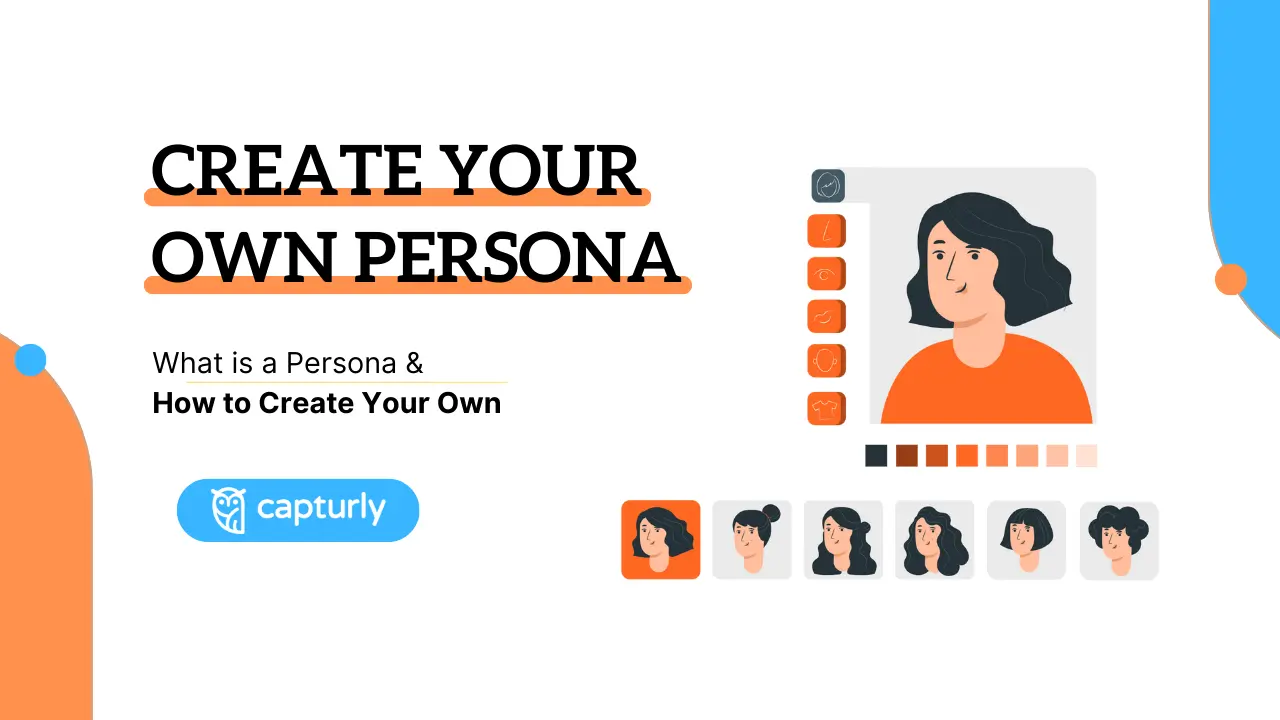Updated: 2024-03-11
If you are a UX designer, I am certain that you are familiar with the word “persona”. But what about the others? Do you really know why personas are indispensable and how can they help you? Maybe this example will help you to understand the concept and how to implement it into your own business.
Table of Contents
What is a persona?
A UX Designer’s job basically starts with the creation of the persona(s). Without them, there’s not much use starting anything.
A persona is a fictional customer type who will use your product, they represent the potential consumers with their own stories and backgrounds. The more trustworthy your persona is, the better your chances are.
I’m sure most of you are familiar with the popular simulation game: The Sims. The video game’s objective is to create virtual people (so-called sims), put them into houses and help them to achieve their dreams and live their lives.
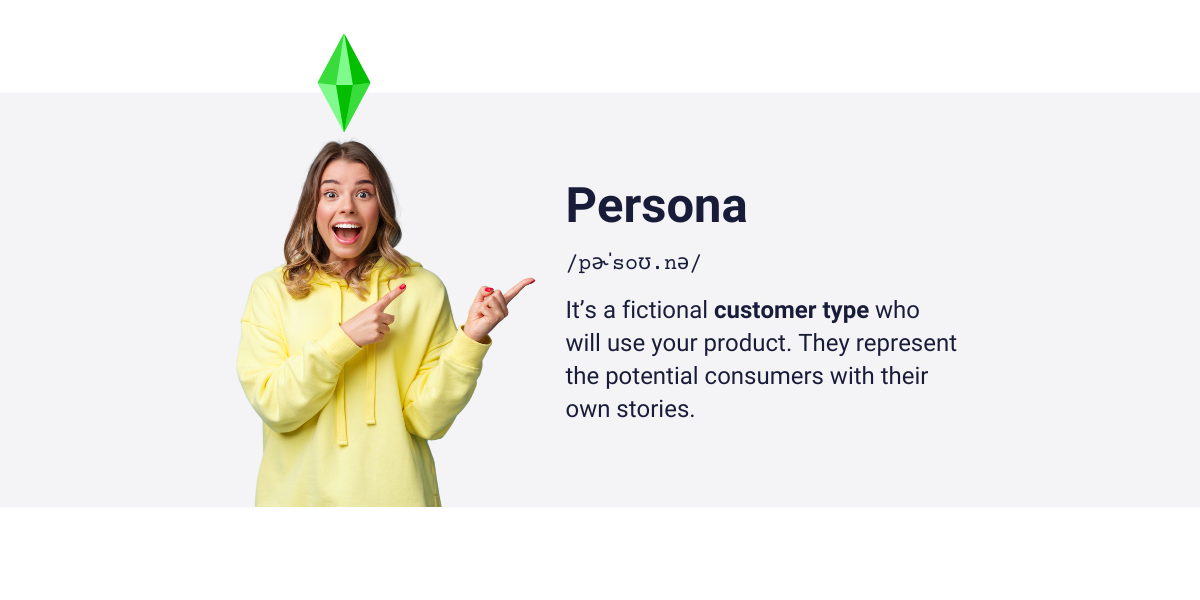
By the end of this article you will realize that creating a sim is reasonably similar to the creation of the personas. In Sims, you have to decide about the gender, life stage, appearance and traits of a given sim. Designing a persona is fairly similar to that.
Make teamwork more effective by using personas
The given personas will assist you to avoid potential conflicts between your team members. As we are human beings, we tend to focus on our own needs instead of the users’ needs. With this method the individuals’ opinions are no longer relevant, the focus is on the persona’s goals.
During the designing process of the personas, the whole team has to cooperate. Being objective is the key, and one person can barely do that.
Note: the most rational profiles come from field studies, these make the most realistic personas.
How many personas will you need?
Usually designing 2 or 3 personas is enough. You mustn’t have too many, because if you have unused ones, it’s worse than not creating them at all.Why would you spend money and time on something that you are not going to use?
Alan Cooper – who is often called the father of Visual Basic – emphasized that we have to pay attention to our primary persona, so that we can satisfy him for the most part, and make our secondary personas happy. On the one hand, we mustn’t think that we have to please everyone, because in the end, we might end up pleasing no one.
On the other hand, you shouldn’t stereotype your users, oversimplification can also ruin the whole work.
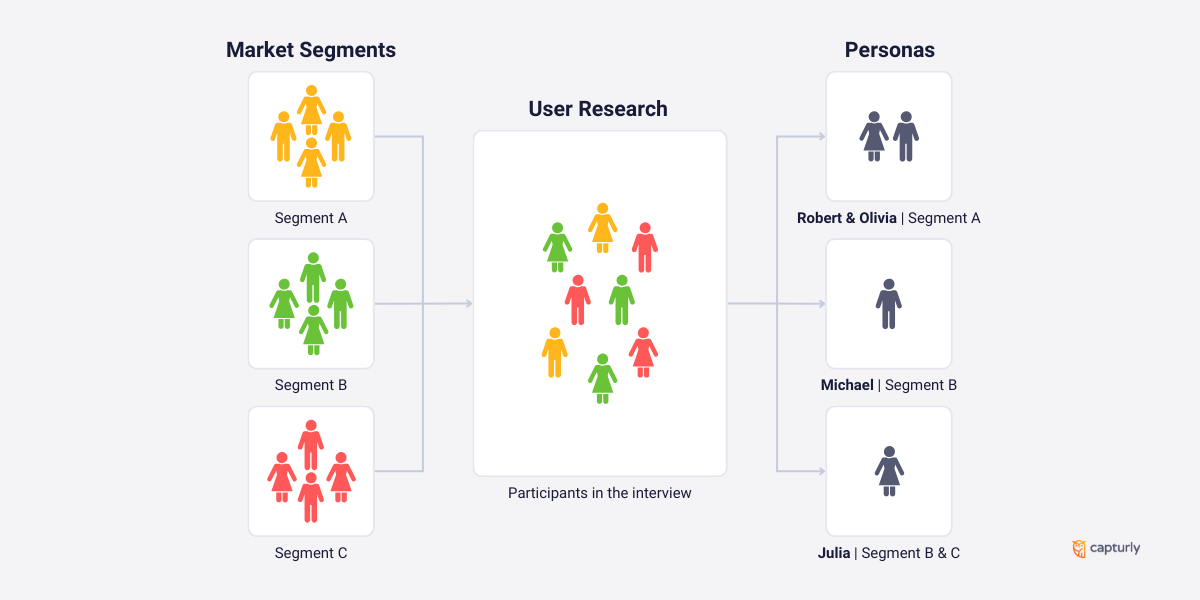
Different types of personas
According to Alan Cooper, 3 types of personas can be differentiated:
Marketing personas
It’s kind of a materialistic approach, the creators concentrate on answering the WHAT questions, but not the WHY ones. They gain demographic data, shopping preferences, motivations, concerns, and media habits. A typical example would be 20–30-year-old USA citizens with their relevant behaviors listed.
It’s very useful for determining the customer types, but not much besides that.
It won’t tell us anything about how they use the given product, which features they would appreciate, and what they really want to gain with our product.
Proto-personas
If you are in a hurry and have absolutely no money to spend on creating your own personas, you can have proto-personas, which are provided by secondary research. These work like prototypes, as the name says it too. However this type is the worst of the three, Alan Cooper’s opinion is that using proto-personas is still a better option than not creating personas at all.
Design personas
This type focuses on answering the WHY questions, but not the WHAT ones. These include their goals, behavior, and pain points. They are usually created by field research and with the help of real people. This type usually has an individual story for each given persona. With the before-mentioned data, we can shape the personas much more precisely, as we are able to gain insight, implement the users’ goals, etc.
The importance of empathy
Can you recall 2 of your favorite advertisements? Do you know why could you recall them? The most likely explanation is empathy. The medical definition of empathy is:
“The action of understanding, being aware of, being sensitive to, and vicariously experiencing the feelings, thoughts, and experience of another of either the past or present without having the feelings, thoughts, and experience fully communicated in an objectively explicit manner.”
With the help of empathy, you can create design personas.
How? The answer is an empathy map.
How to use the empathy map?
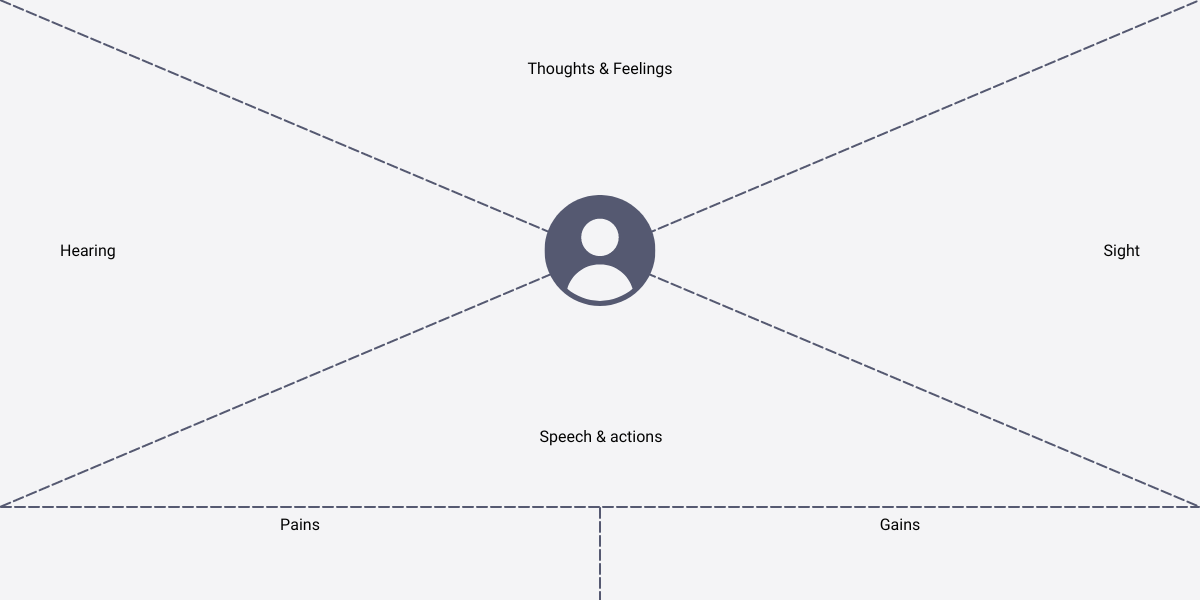
As you can see in the picture, there are different sections to be filled. In order for this map to be useful, you have to empathize with the persona and “be” him for a day, walk some miles in his shoes to really understand his situation.
Name
Naming your personas can help you to remember them easily and separate the different profiles from each other.
Photo
Attaching a photo (even if it’s just a sketch or drawing) can help you to associate the persona with a face.
Occupation
Giving the persona an occupation can undoubtedly improve the outcome. As a person’s job takes up a big portion of her life, the same applies to our fictional persona: it can have a huge impact.
Thoughts and feelings
The personas own speculations, those things that really matter to him, either in a positive or a negative way, both of them are important. Note down every relevant piece of information.
Sight
Those things that the persona sees. This can be anything that is considered important from his point of view, even a personas home, neighborhood, work environment, family and friends, something beautiful or even irritating.
Hearing
What do the people around him say, what music does he listen to, which noises irritate him? The persona’s friends, boss and people who influence them can be a crucial part, depending on how pliable the persona is.
Speech and actions
The persona’s actions are also important to be listed as detailed as possible in order to speculate later what would our customers do in a given situation. This section can include our persona’s activity, behavior in public and in private environment too.
Pains/frustrations
In this step you list the frustrations of the persona in order to be able to solve them later on. This can be a minor frustration or even a great challenge, it depends on the profile.
Gains/goals
This is a crucial step: you have to define the goals of the persona, accomplishments, which are aimed to be met by your product afterward.
Note: it is not enough to simply create the personas, this method works best if we create them and use scenarios too.
Let’s take an example of how to create personas
I am opening a cafe, do I need personas? My friend asked me this and my answer was: YES, you do. Let me show you how you should do it. Personas can almost always help you, not just in particular situations like developing a mobile application.
Let’s say that you are about to open a mid-sized coffee shop in the city center with a warm atmosphere, high-quality coffee, and relatively cheap prices.
1. Hold a quality brainstorming session
First, you should sit down with your team and have quality brainstorming sessions. Arrange more sessions, if possible.
In this particular situation, I would recommend you imagine as many potential customer types as possible (who would, of course, be willing to visit your cafe).
The main idea of brainstorming is to let your thoughts flow freely. It doesn’t matter if somebody doesn’t have the best idea (or even if it’s a stupid idea), but if people are scared to state their opinion, the outcome will be distorted.
Once nobody has any more ideas to share, you can start arranging the existing ideas. Remember that you mustn’t have too many personas, but having one persona is merely enough. You have to organize them into an order based on the importance of the given customer types.
For example, you want to have a cafe with a cozy atmosphere. This means that your primary customers probably won’t be wealthy businessmen. Even if they come, they won’t be there for hours chatting about their job and cars, they’ll have those coffees on the go.
2. Define your primary customers
Let’s say that in the end, your team agreed on having 3 personas. Your 3 most important customer types will be:
1. students
2. housewives
3. young adults
Many small business owners stop here. DON’T do that! This is not too different from having proto-personas or marketing personas. What you need to do is to create design personas.
3. Set up your empathy maps
The next step is to have your empathy maps printed, sticky notes, pens, coffee and cookies prepared: let the fun part begin.
Your first persona will be in the first customer type. We are filling the empathy map now.
She is Angie, a high school student.
[Insert your image here]
With this little step, we completed 3 of the 6 aforementioned steps. (Angie could be a university student too, it depends on your very own preferences.)
The next section includes more creativity. You have to be Angie for a day and note down EVERY important piece of information. After that, arrange them and put them on the empathy map.
She will do tons of things, but you will have to sort them out. Remember that you don’t want to have a list with every single action your persona does, only a short list of those actions that might affect your company.
In the picture you can see my rough draft, of course, it may vary, but you can get the hang of it from this and create your very own empathy maps with more detailed and complex structure.
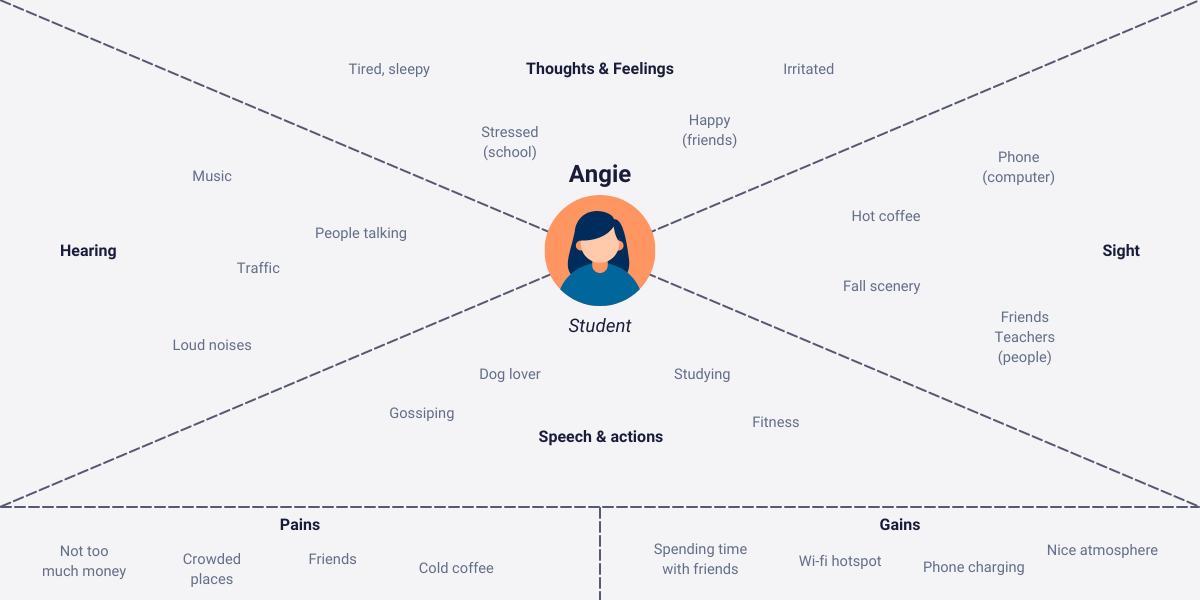
See? It’s not that hard.
4. Extend and optimize the profile of personas
The next step is to create your housewife (Susan) and your young adult (Peter). They’ll be somewhat different from each other of course.
Once you have all of your empathy maps done, you can start focusing on sorting the sticky notes. You should have two groups: the ones that you can try to solve, and the ones that you cannot. Don’t throw the second group away, they might be useful later.
The we-might-be-able-to-solve-these notes should be put in an order too, according to how much effect it has or how easily you can solve them.
Then you can focus on solving them, from easiest to hardest.
For example Angie likes to have a free Wi-Fi hotspot and listening to music with her friends. You can see that it’s not to hard too satisfy, but it can have an incredible effect.
Speaking of Wi-Fi, it won’t bother anybody, so we have to make sure we add it to the list.
In connection with the music, it’s harder, because some people might not like it. You have to find the golden mean.
On the other hand, Angie is pissed off when a guy she hates appears. I think we can all agree that we cannot really solve this problem (unless your cafe is a consultancy too).
After sorting the notes, go over every single one of them and see if anyone has a solution. If you have multiple solutions, I suggest writing all of them down, and choosing the most suitable one.
Conclusion
The importance of the customers is gradually increasing, many of the successful companies’ vision and mission relies on that too. Of course there are other important factors, but you mustn’t forget that in the end the customers are the ones who increase your income.
And remember… however, designing an accurate design persona requires some skills, in some cases it’s not much harder than creating a sim on your computer.
Do you have any thoughts or feedback? Discuss it with us.
If you liked the article, it would mean the world to me if you recommended or shared it.

Don't forget, sharing is caring! :)

